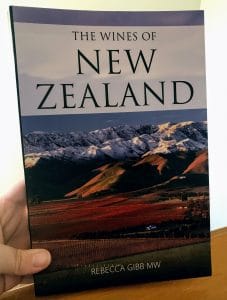At a recent panel on New Zealand wine held in London, Richard Siddle, a long time editor of several UK wine business publications, called the Land of the Long White Cloud “The Coldplay of the wine world”.

Ouch.
Ostensibly, it was meant to be a compliment with Siddle noting that Kiwi wines are “consistent, popular and in everyone’s collection”.
But liking a country’s wines to a band that has just as much ink devoted to wondering why they’re so loathed as they do positive press, doesn’t exactly scream “Highly Recommended!”.
With compliments like that, who needs insults?
Dad Music and Mom’s Wine
Nylon columnist Anne T. Donahue aptly summed up the criticism of Coldplay following their 2016 Super Bowl performance as a chafing against “dad music”.
I mean, it’s not that Coldplay was incompetent or bad—they were fine. But “fine” isn’t enough, especially when compared to Beyoncé’s “Formation” battle cry, and her dance-off with Bruno Mars. To appear alongside both artists on stage served only to highlight Coldplay’s normality; to draw attention to the overt safeness of a band we once felt so strongly for, which then reminds us of who we used to be. Ultimately, Coldplay has become the musical equivalent of a friend we had in high school: okay, I guess, but someone you don’t have anything in common with anymore. — Anne T. Donahue, 2/12/2016
I have to admit, that “okay, I guess” sentiment really does encapsulate my thoughts on New Zealand Sauvignon blanc. Maybe Siddle is onto something?
Now don’t get me wrong. New Zealand Sauvignon blanc does have many charms. They’re always exceptionally well made and consistent. Virtually regardless of producer or vintage, you can order a Kiwi Sauvignon blanc and know exactly what you’re going to get.
Grapefruit, passion fruit, gooseberry and guava. Check. Lemongrass, green bean and jalapeno. Check. Crisp, lively mouthfeel. Check.
For students taking blind tasting examinations, you pray that a New Zealand Sauvignon blanc is included in your flight. In a world of so many exceptions, a classic Marlborough Sauvignon blanc is as much of a sure thing as you can get.
Which makes it boring as hell.
When you get what you want but not what you need
There’s no doubt that since Montana Wines/Brancott Estate introduced to the world Sauvignon blanc from Marlborough in the 1970s, it’s been a raging success for the New Zealand wine industry. In 1985, it status was elevated even further when David Hohnen established Cloudy Bay as the first dedicated premium Sauvignon blanc producer in New Zealand.
Soon supermarket shelves and restaurant wine lists were awash with the wine of choice for suburban moms everywhere. Led by labels like Kim Crawford, Nobilo, Villa Maria and Oyster Bay, around 86% of all the wine exported out New Zealand in 2017 was Sauvignon blanc.
The flood of grapefruit and gooseberries to the US alone generated around $571 million in sales. Those figures, coupled with still healthy sales in the United Kingdom, pushed the value of New Zealand exports over $1.66 billion NZ dollars in 2017.
Yet the overwhelming dominance of the industry by one grape variety has given many folks, such as Master of Wine Tim Atkin, reason to question if this is “…too much of a good thing?”
Arguably the biggest problem with New Zealand Sauvignon Blanc is the influence it has had outside the country. It’s not just the idiotically named Kiwi Cuvée, produced in the Loire Valley by the French company Lacheteau, it’s also the me-too styles that are produced in countries like Chile, South Africa and Australia. Yes, I know that there are different interpretations of New Zealand’s signature grape, but the most successful is the one that someone described as a “bungee jump into a gooseberry bush”. With some residual sweetness, of course. — Tim Atkin, 3/7/2018
The bounty of options of not only authentic New Zealand Sauvignon blanc but also a parade of facsimiles is like skipping over “Clocks” on Spotify only to have the next song be a cover band version.
Is It All Yellow?

Really fantastic Pinot gris from Martinborough. It had some of the zippy acidity and even gooseberry of a NZ Sauvignon blanc with the tree fruits and weight of an Oregon Pinot gris.
Even New Zealand producers are starting to fret about the risks of having all their eggs in one grapefruit basket.
Lucy Shaw of The Drinks Business quotes Philip Gregan, CEO of New Zealand Winegrowers, at that London panel with Siddle “The challenge now is to broaden the story beyond Sauvignon Blanc. We’re a New World country so we need to be open minded, think differently and come up with fresh ideas in order to keep our wines exciting and relevant.”
Google “New Zealand wines beyond Sauvignon blanc” and you’ll get a laundry list of wine writers and bloggers craving something different.
Will those cravings eventually extend to consumers who are still driving the thirst for tankers of Sauvignon blanc?
Perhaps.
While right now Pinot noir has a head start in crafting its own identity in New Zealand, it could be the sirens of Chardonnay and Pinot gris that tempt bored Millennials back to the islands.
Tell me your secrets, And ask me your questions

The last chapter of Gibb’s book gives tips about visiting the wine regions of New Zealand. This will be extremely handy next year when the wife & I visit the country either before or after the Wine Media Conference in Australia.
If you’re interested in learning more about New Zealand wine–both Sauvignon blanc and the vast diversity beyond that grape–here are a few of my favorite resources.
The Wines of New Zealand by Master of Wine Rebecca Gibb.
I highlighted this book back in a July edition of Geek Notes and it has certainly lived up to its billing. By far this is the most comprehensive and in-depth coverage of the New Zealand wine industry that I’ve come across. While a lot of the producers and wine recommendations that Gibb make may be hard to find in the US market, she definitely spends considerable time highlighting the diversity of New Zealand wines beyond Sauvignon blanc.
UK Wine Show with Chris Scott
Chris Scott is a New Zealand native and wine educator in the UK. Sprinkled among the show’s 570+ episodes are numerous interviews with New Zealand wine producers and experts. A few of my favorites are below.
Harpers Podcast 1 New Zealand wine growers (58:23) — A bit unique compared to the usual UK Wine Show format with Chris interviewing Philip Gregan and 3 growers from different parts of New Zealand.
Allan Johnson on Palliser Estate, Martinborough (30:22) — Palliser is making some fantastic wines including Pinot gris (mentioned above) and Pinot noir that are distributed in the United States.
Martinborough Vineyards with Paul Mason (34:12) — Really great insights about the terroir of the Martinborough region on the North Island and the style of Pinot noir grown here.
Steve Smith Craggy Range on Terroir (20:27) — Steve Smith is a Master of Wine and here he touches on a lot of the unique aspects of New Zealand terroir–including why not every area is suitable for Sauvignon blanc.
Dr John Forrest of Forrest Estate on Riesling (24:12) — While I haven’t had an opportunity yet to try a New Zealand Riesling, it’s clear that there are some special areas in New Zealand (like the Waitaki Valley in the Central Otago) for the grape.




